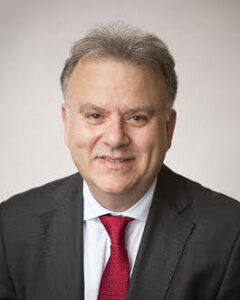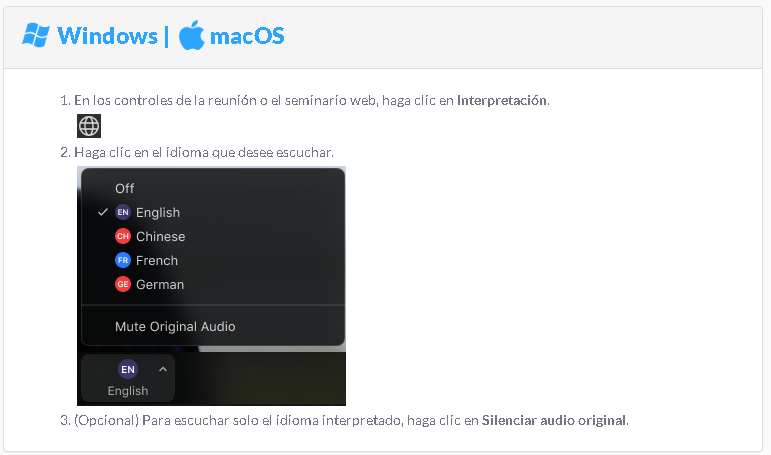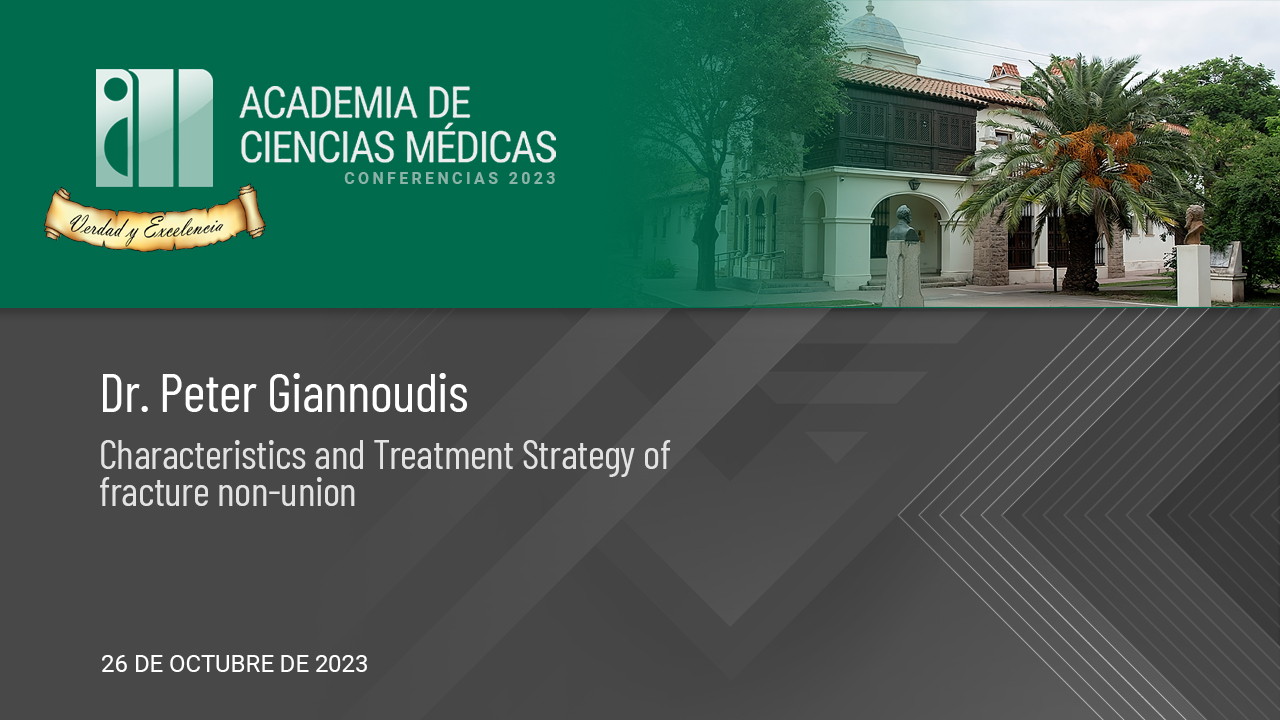Dr. Peter Giannoudis
El Acto Académico de carácter virtual se llevó a cabo el jueves 26 de octubre a las 18 hs.
Presentación: Acad. Bartolomé Allende

Antecedentes Curriculares del Dr. Peter Giannoudis
- Profesor de la Facultad de Medicina, Universidad de Leeds, West Yorkshire, Inglaterra.
- Consultor Honorario en Leeds General Infirmary (LGI),
- Jefe de sección del Departamento y responsable de los Ensayos Clínicos en el Leeds General Infirmary Hospital.
- Fellow de: Royal College of Surgeons of England, American College of Surgeons y de Royal College of Surgeons and Physicians of Glasgow.
- Fellowships de trauma: en la Universidad de Louisville, Kentucky, EE. UU. y Hannover Medical School , Hannover, Alemania.
- Presidente de la British Trauma Society (2003-2007),
- Presidente de la European Society of Pelvis and Acetabulum (2007-2012),
- Presidente de la European Society Tissue Regeneration in Orthopaedics and Traumatology(2018 en adelante),
- Presidente del Comité Internacional de la Asociación de Traumatología Ortopédica(EE. UU.) (2012-2018),
- Chair de la International Committee of Orthopaedic Trauma Association (USA) (2012-2018),
- Fideicomisario de la British Orthopaedic Association (2017-2020)
- Editor en Jefe de Injury Journal (2010 en adelante).
- Ha publicado más de 600 artículos revisados por pares.
- Ha impartido más de 250 conferencias nacionales e internacionales
Resumen «Characteristics and Treatment Strategy of fracture non-union»
Nonunion remains one of the most troublesome complications after fracture fixation. Its incidence remains high. Different etiological factors have been reported over the years divided into patient, related, injury related and quality of surgery performed. Patient profile and nonunion characteristics present with high heterogeneity, thus is difficult to standardize treatment strategy.
Presence of infection and avascularity of bone requires excision of the affected bone edges leading to a more challenging clinical situation characterized by bone loss. If the defect created is greater than 2.5 times of the diameter of the affected bone, then we are dealing with a ‘critical size bone defect’ requiring escalation of treatment modalities.
The general principles of treatment include the conversion of a septic to an aseptic environment if there was presence of infection previously, providing optimum fracture stability and adequate biological stimulation by selecting and implanting the appropriate type of biological stimulating agent. In this respect the so-called diamond concept has an important role to play guiding clinicians in selecting the appropriate type of stimulation (induction, conduction, progenitor cells).
An overview, of the etiology, diagnosis, early prediction using nonunion scoring systems and treatment modalities will be discussed as well as the results of treatment.
Instructivo para acceder a la Conferencia en el Idioma Inglés / Español mediante computadora

En caso de conectarse por un medio alternativo comunicarse al +54 93516100935

